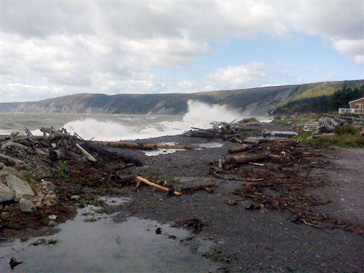 The Cumberland Regional Emergency Management Coordinator can be contacted at 902-667-2313.
The Cumberland Regional Emergency Management Coordinator can be contacted at 902-667-2313.
Emergency Preparedness
EMO - Emergency Management Office, Nova Scotia
Emergency Preparedness for You and Your Family
Are you prepared for an emergency?
Emergency officials work to ensure the readiness of our communities, municipalities and province in an emergency event. However, we as individuals also have a responsibility to ensure our own safety and that of our family.
If you are without electricity for a couple of days, or weeks, do you have the supplies needed to see you through? Do you have a household emergency plan outlining exit routes from your home and your neighbourhood?
Emergencies can be stressful, but if you take the time now to prepare yourself and your family you will be better able to cope. Being prepared means:
- Knowing the risks
- Developing a plan
- Preparing a kit
Know the Risks
Being aware of the potential risks we face in Nova Scotia can help you to be better prepared should an emergency occur. You may find it helpful to make a list of these risks and think about how they might affect you and your family.
Knowing the risks in your community or region can help you to be better prepared when an emergency occurs. Some of the risks we face are seasonal such as winter storms, flooding, wildfires and hurricanes. Other risks include industrial incidents, transportation and infrastructure accidents.
Weather-related events can occur at any time of the year and may have an impact on you and your family. To find out the latest weather warnings for Nova Scotia please visit Environment and natural resources: Weather Information
Develop a Plan
Everyone needs an emergency plan. It will help you and your family know what to do if an emergency should occur.
Every Canadian household needs an emergency plan. It will help you and your family know what to do in case of an emergency. It will take you about 20 minutes to make your plan. Your family may not be together when an emergency occurs. Plan how to meet or how to contact one another, and discuss what you would do in different situations.
To create your own plan, download our pdf Family Emergency Plan(49 KB) printable version.
Keep this document in an easy-to-find, easy-to-remember place (for example, with your emergency kit). Photocopy this plan and keep it in your car and/or at work.
Prepare a Kit
 Being prepared for an emergency also means having the necessary supplies on hand to help you and your family cope.
Being prepared for an emergency also means having the necessary supplies on hand to help you and your family cope.
The Red Cross recommends that you keep a disaster preparedness kit in your home with enough supplies to meet your family’s needs for at least 72 hours. By taking the time now to store food, water and other supplies, you can provide for your entire family in the event of an emergency. The following list is a guide of suggested items to have in your disaster preparedness kit at home. It is important that you check it every year and resupply it after every use.
Items to include in a disaster preparedness kit include:
- Bottled water
- Non-perishable food
- Radio (battery or wind-up)
- First Aid Kit
- Flashlight
- Emergency Phone List
For a full list of items, please see the Disaster Preparedness Kit.
For more information on REMO programs and services please contact us.

